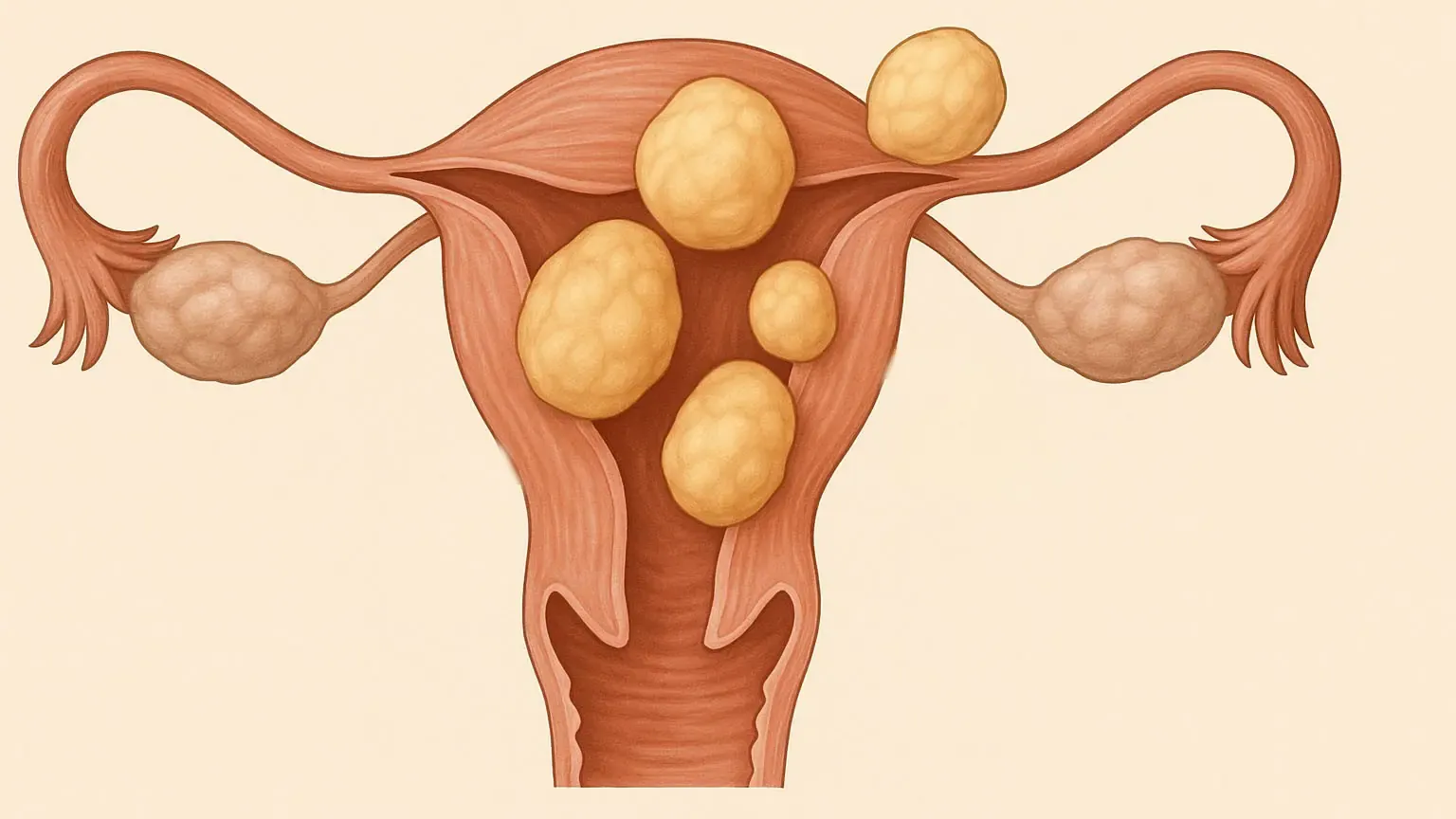Treatments
Laparoscopic Myomectomy for Uterine Fibroids-Myomas
A Gentle, Fertility-Preserving Approach to Fibroid - Myomas Removal
Dr. Lucas Minig – Minimally Invasive Surgery Expert Care for laparoscopic or robotic fibroids removal with uterine preservation
Request Consultation or Second Opinion

You Deserve Options That Prioritize Your Future
Uterine fibroids are common, but that doesn’t mean they have to control your life. Whether you're experiencing heavy bleeding, pelvic pain, or you're trying to conceive, laparoscopic myomectomy offers a minimally invasive, fertility-preserving solution.
At our center in Valencia, we specialize in advanced, uterus-sparing procedures that restore comfort and protect reproductive potential. Most patients return home within 24 hours, with minimal scarring and a clear path to healing.
DOWNLOAD A FREE Roadmap
[Download Your Fibroid Treatment Guide]
Your step-by-step roadmap for understanding fibroid symptoms, treatment options, and what to expect before and after surgery.
What Are Uterine Fibroids?
Fibroids (also called myomas) are benign, muscular tumors that grow in the uterus. They can be single or multiple, and vary greatly in size and position. While benign, they can cause:
- Heavy or prolonged periods
- Pelvic pain or pressure
- Fertility difficulties
Laparoscopic myomectomy is often the preferred approach for patients who want relief without removing the uterus.

How Laparoscopic Myomectomy Works
All surgical procedures are performed by Dr. Lucas Minig, a global leader in complex gynecological surgery. Surgeries are performed under general anesthesia using 4 small incisions (5 mm) in the pelvis. The duration varies according with the number, localization and size of uterine myomas. Through these entry points, a laparoscope and surgical tools are used to:
- Locate each fibroid
- Carefully excise the tumor
- Repair the uterus layer by layer
The fibroids are then removed through the navel in a sterile bag to protect surrounding tissues.
When Is Myomectomy Recommended?
You may be a candidate for laparoscopic myomectomy if you:
- Experience significant symptoms (bleeding, pain, pressure)
- Want to preserve your uterus
- Are trying to become pregnant
Your care plan will be personalized based on your age, fertility goals, fibroid size and location.
Patients from around the world trust our expertise to treat even the most complex cases that local providers may not manage.

Recovery Timeline
Days 0-1
Urinate by yourself. Walking. Hospital dishcarge by Dr Minig in-person
Days 1-15
Progressive home recovery; virtual follow-up. Day 10 - 15: travel to your city/country
Weeks 2–4
Normal activities resume according with level of pain; discomfort fades.Back to work. virtual follow-up.
Months 1–3
Back to full rutine, including work and excercises. virtual follow-up...
Ongoing
Annual ultrasounds help monitor for recurrence
We provide virtual check-ins and direct access to Dr. Minig throughout your healing process.
Planning for Pregnancy After Myomectomy
If you're hoping to conceive, it's important to give your uterus time to heal. We typically recommend waiting to 6 months before trying to become pregnant. This allows the uterine wall to regain strength and minimizes risk during pregnancy.
Benefits of Laparoscopic Myomectomy
- Smaller incisions and less postoperative pain
- Faster recovery compared to open surgery
- Minimal scarring and lower risk of adhesions
- Preservation of uterine structure and function
Not all patients are candidates for laparoscopy. We’ll assess your case carefully to ensure the safest and most effective approach.
Why Choose Dr. Minig for Fertility-Sparing Cancer Care?
More than a clinic — we are your international partner in healing.
With over 20 years experience treating global patients, we offer personalized surgical care and full logistical support for those traveling to Valencia.
- Specialized Expertise: Specialist in advanced minimally invasive gynecological surgery
- Minimally Invasive Excellence: Over 95% of our surgeries utilize laparoscopic or robotic techniques.
- Individualized Care: We align treatment with your pain tolerance, fertility desires, and lifestyle.
- Whole-Woman Approach: From surgery to nutrition and emotional well-being, we support every facet of your health.
- Industry-Leading Research & Innovation
"After visiting several doctors, I finally felt heard by Dr. Minig. He explained everything clearly and made me feel confident. The surgery went smoothly and recovery was faster than I imagined."
— Luisa, Valencia

International patient welcome
Whether you’re in Europe, North America, or beyond, our clinic offers:
Tele-Consultations in English, Spanish and Italian
Concierge Travel Assistance for visas, lodging, and local transportation
Flexible Scheduling to accommodate your time zone
Frequently asked questions
What type of anesthesia is used during a myomectomy?
General anesthesia is typically used for all types of myomectomy—laparoscopic, abdominal (open), and occasionally hysteroscopic. This means you’ll be completely asleep and pain-free during the procedure.
What happens during laparoscopic myomectomy?
A laparoscope—a thin tube with a camera—is inserted through a small incision near the navel. Additional tiny incisions are made in the abdomen for the surgical instruments. This minimally invasive technique allows fibroids to be removed with precision, less pain, and minimal scarring compared to open surgery.
What can I expect during recovery?
After a laparoscopic myomectomy, most patients are able to move around and perform light daily tasks within 24–48 hours. Full recovery usually takes one to two weeks, although rest is important in the first few days. You should avoid heavy lifting, strenuous activity, or sexual intercourse until your doctor gives you clearance.
How long does the uterus take to heal?
It typically takes about 3 to 6 months for the uterus to fully heal after a myomectomy—especially if you’re considering pregnancy. This recovery period reduces the risk of uterine rupture or complications during a future pregnancy.
Ready for Relief? Let’s talk.
Whether you want our symptom kit, the patient guide, or to speak directly with Dr. Minig, we’re here for you.
